By Agha Iqrar Haroon
I am at the last leg of my life but I will leave behind the music that will remain with you for all times to come — Surinder Kaur—Toronto 1998 live show
“Mavan te dhiya ral biathya ni maye”, a Punjabi song recorded on Radio Pakistan Lahore in 1943 is still the best-ever written and sung song representing anthropological aspects of the mother-daughter relationship of agrarian Punjab and still makes Punjabi mothers and daughters cry while listening this song.
This song is a living memory of my mother and listening to this song always connects me with my mother who died on December 21, 1981. Whenever my mother used to sing this song, I saw her weeping. I could not understand the reason and relationship of this song with my mother’s tears. Now at the age of 55, I may feel the pain and memories that could link some stanzas of this song with the innate motherhood of my mother. My mother lost her mother when she was just 12 years old.
Having two younger sisters aged nine and seven, she brought them up with the support of my maternal grandfather who decided not to go for remarriage after the death of my maternal grandmother. Brought up in a protected family at Paisa Akhbar building, Urdu Bazaar Lahore with lots of cousins, my mother had almost everything in her life being the eldest daughter of Maulana Hifzur Rahman Paisa Akhbari but she had no mother with whom she could sit and share herself. She had no brother but her male cousins loved and respected her as their eldest sister till her last breath. After finishing her A-level from the then most expensive girls school “Lady Maclagan Girls High School, Lodge Road, Old Anarkali, Lahore, my mother was married in 1950.
My mother must have been 13 or 14 years old when the song “Mavan te dhiya ral biathya ni maye” (mother and daughters are sitting together) was recorded at Lahore Radio station in 1943 and being a daughter of an affluent family, she must have had radio and must have listened to this song at a very young age when she had already lost her mother and was acting as a mother of her two younger sisters.
Sung by Parkash Kaur and Surinder Kaur, this song became an instant hit and it is still as popular as it was in 1943 and thereafter. The young singer Surinder Kaur and my mother were both born in the same year—1929 and lived in the same city—Lahore and not very far away from each other because walking distance from Paisa Akhbar building to Bashan Street Chuburji is hardly two miles. However, I am sure they had never met each other but the song “Mavan te dhiya ral biathya ni maye” connected both of them forever and my mother kept singing this song till the last months of her life. Another factor in the lives of Surinder Kaur and my mother is strangely similar. Surinder Kaur became a widow when she was just 47 years old while my mother became a widow at the same age when my father died at the age of 52 in 1977. However, my mother could not survive without my father for long and she died just after four years her husband’s death.
In one of her interviews, Surinder Kaur mentioned that her mother used to sing “Mavan te dhiya ral biathya ni maye” and this was the reason that when Surinder Kaur had the first opportunity for Radio recording with her eldest sister Parkash Kaur who was already a known Radio voice, Surinder decided to record folksong “Mavan te dhiya ral biathya ni maye”.
Surinder Kaur’s life is documented by her eldest daughter Dolly Guleria in the form of a printed book as well as an audiobook and my contact with her granddaughter Sunaini Sharma (daughter of Dolly Guleria) was helpful in rechecking certain facts about Surinder’s life. Therefore, for me, this article is a story of two mothers—-my mother and the mother of Surinder Kaur who used to sing “Mavan te dhiya ral biathya ni maye”. Actually, this folksong links every Punjabi mother with her mother and her daughters—A song that beyond any iota of doubt became eternal through the voices of Parkash Kaur and Surinder Kaur.
The story in this article has multiple dimensions as it is a story of pains and agonies left behind by the division of the Indian subcontinent in 1947 and the rise of an urban Punjabi girl of an educated family as the voice of both the Punjabs and her contribution for documenting anthropological aspects and oral wisdom of Punjabi culture through her songs.

Born in Lahore on November 25, 1929, Surinder was raised with her four sisters and five brothers at Bashan Street Chuburji Lahore. Her father was a chemistry professor at Government College Lahore. Surinder Kaur was an urban Punjabi girl from Lahnda Punjab (West Punjab) who was raised in a well-educated family in Lahore city but contributed her whole life to documenting and saving classical Punjabi language and collective Punjabi consciousness through her songs.
Surinder Kaur wrote some of her memories when she was living abroad with her daughter.
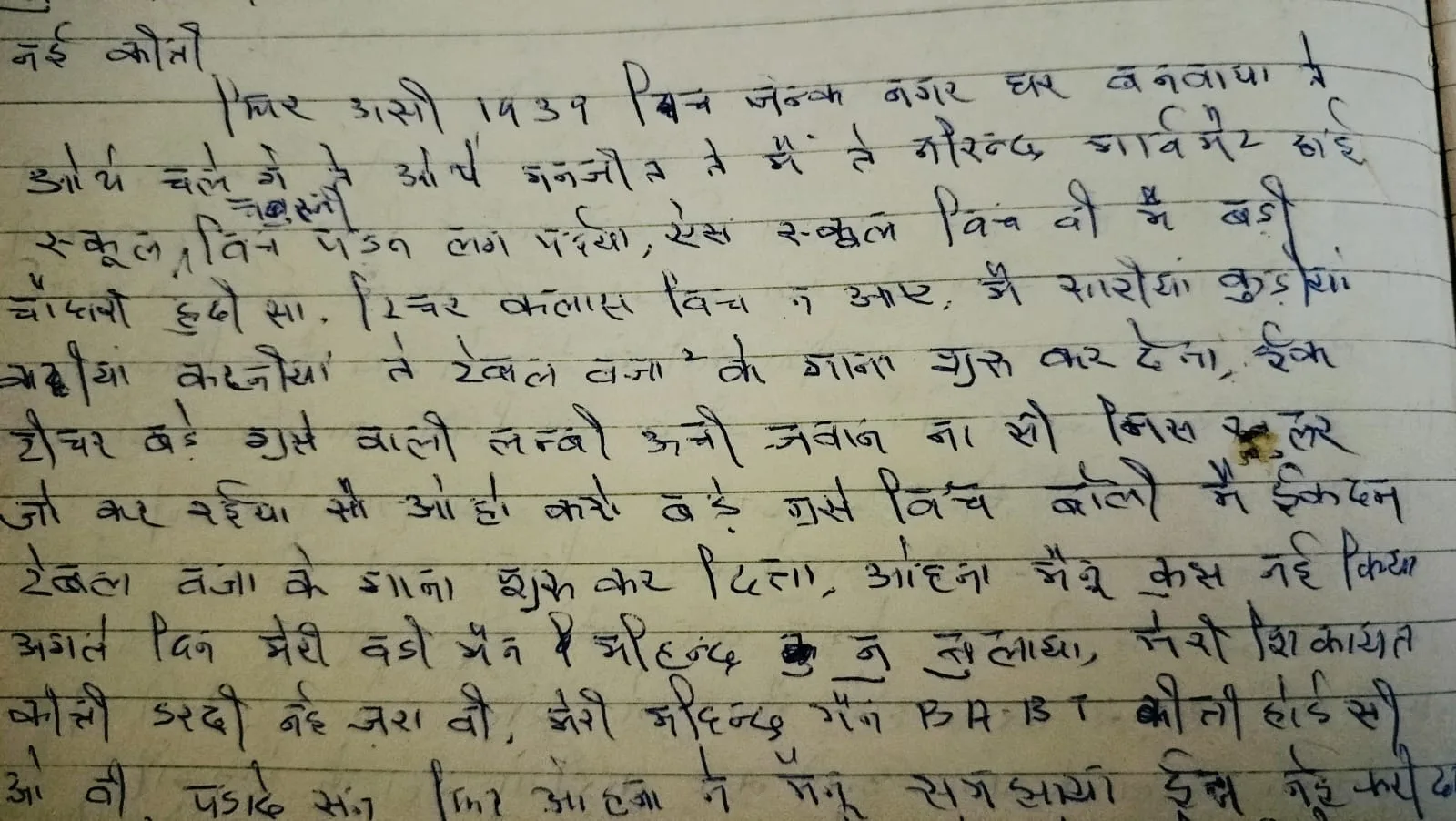
According to these memories, she spent the early years of her education in Victoria School Lahore which is now known as Victoria High School. She added that in 1939, she moved to Arya Nagar Girls High School in Lahore.
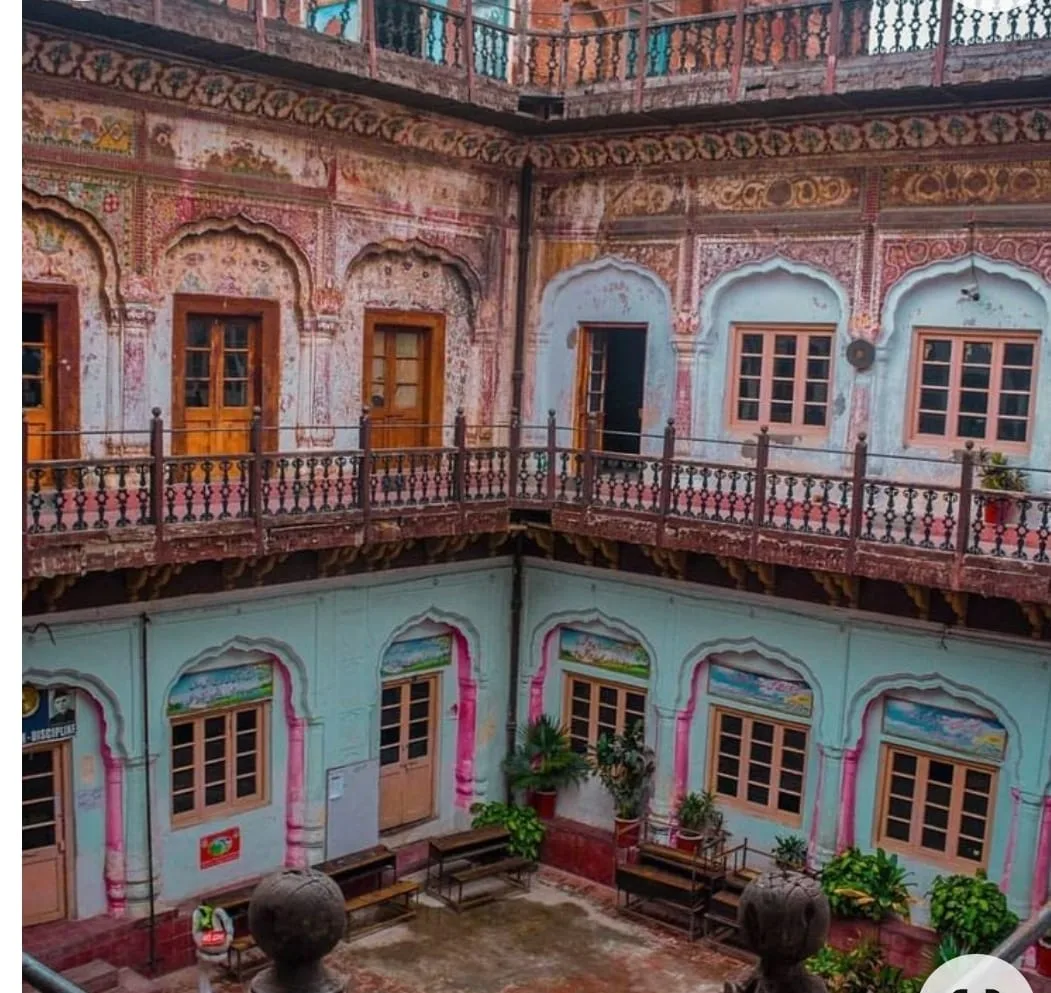
Government Victoria Girls’ High School, is in Haveli Nau Nihal Singh. Dating from the Sikh era of the mid-19th century, the haveli is considered to be one of the finest examples of Sikh architecture in Lahore and is the only Sikh-era haveli that preserves its original ornamentation and architecture. It is situated at Circular Road, Mohalla Sathan Walled City of Lahore.
She did her matriculation at Arya Nagar Girls High School Lahore which was an English Medium School and was in the vicinity of Choburji Garden. The school was established in the same year (1929) when Surinder Kaur was born. Having a total area of 14 Kanal of land, 10 Kanal was an open area (grounds) and the building was spread over four Kanal in 1929. The school was renamed after the division of the Indo-subcontinent as “Govt Girls High School Choburji Garden Lahore”.
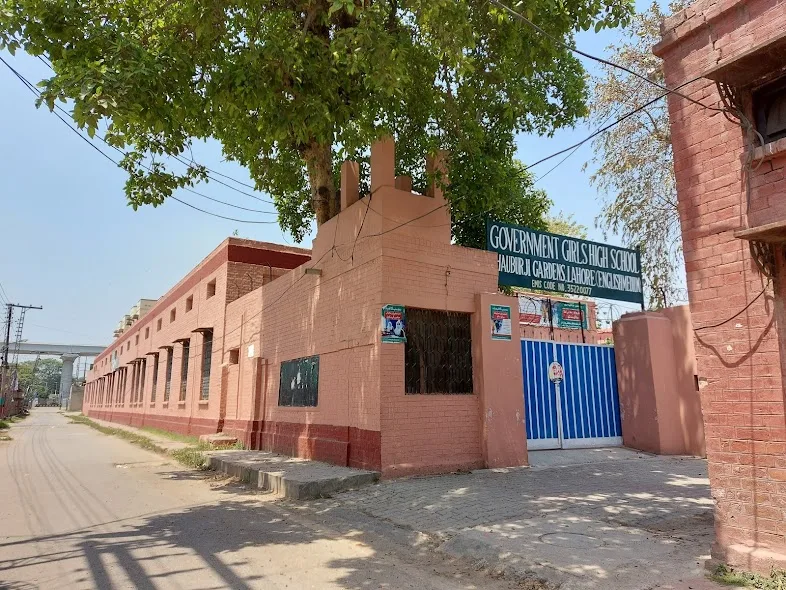
Surinder Kaur’s paternal and maternal grandfathers belonged to educated families of Lahore, mostly working in the Railways and Education Department of the undivided sub-continent. Her two aunts and one sister were also in the profession of teaching. A free soul by birth, Surinder Kaur had no such love with studies but she was an intelligent girl and therefore got good grades in school although she used to spend most of her time playing in the school garden instead of being a studious student.
A book written by her daughter Dolly Guleria titled “Wagdey Paaniyaan Da Sangeet (Music of Flowing Rivers) is the most authentic documentation of the life of Surinder Kaur.
After the division of the Indo-subcontinent in 1947, Surinder Kaur and her parents relocated to Ghaziabad, Delhi. She was married to Prof. Joginder Singh Sodhi, who was born and raised in Gujranwala. Spotting her surprising talent, Prof. Joginder Singh Sodhi became her support system, and soon she started a career as a playback singer in the Hindi film industry in Bombay, introduced by music director, Ghulam Haider. She got an extraordinary response for her Hindi and Urdu songs in the 1948 film Shaheed, including “Badnam Na Ho Jaye Mohabbat Ka Fasaana”, “Aanaa hai tu aajaao” and “Taqdeer ki aandhi” and “Hum kahaan aur thum kahaan”. However, her soul was connected with Punjab and Punjabi, and she eventually moved back to Delhi in 1952 and dedicated her life to reviving Punjabi songs. Got fame from singing Hindi and Urdu songs, Surinder Kaur decided to switch to Punjabi when she was the most popular voice of Urdu and Hindi songs. The force behind her decision was to preserve, promote, and document the Punjabi language. She thought that the Punjabi language was losing its social status and classical diction was vanishing from songs and literature. Her contribution to the Punjabi language is yet to be documented properly.
To my understanding, her biggest sacrifice for the Punjabi language was that she left singing Urdu and Hindi songs and dedicated herself to Punjabi songs at the time when she was a shining star of the Urdu and Hindi songs industry. At a very young age, her voice became the most popular while singing with names like Syria, Muhammad Rafi, Lata Mangeshkar, and Talat Mahmood.
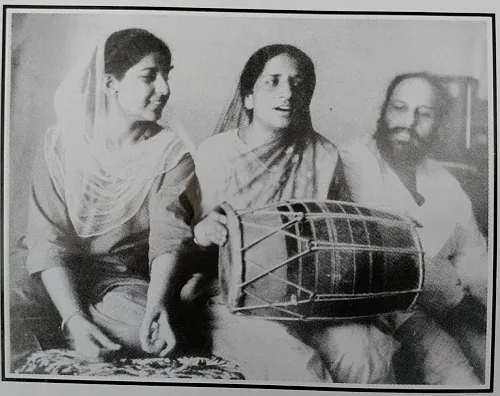
Surinder Kaur’s husband Prof. Joginder Singh Sodhi who did his first master’s in Psychology, left his job to get a master’s degree in Punjabi language because he was the mentor of his wife—Surinder, and wanted to produce Punjab’s wisdom and culture in lyrical form that had not been produced and sung before. His love for Surinder was the driving force behind Surinder’s confidence and success.
Her daughter in her book stated that her father (husband of Surinder Kaur) continued to guide her singing career while Surinder Kaur in one of her interviews said:
“He (Prof. Joginder Singh Sodhi) was the one who made me a star. He chose all the lyrics I sang and we both collaborated on compositions, we wrote together such classics as “Chan Kithe Guzari Aai Raat,” “Lathe Di Chadar,” “Shonkan Mele Di,” and “Gori Diyan Jhanjran”, “Sarke-Sarke Jandiye Mutiare”.
Prof. Joginder Singh Sodhi was an activist and popular among communists of India and his residence was a popular “Baithik” (sitting place for guests) for left-wingers. The Indian People’s Theatre Association (IPTA), which was an arm of the Indian Communist Party in Punjab was strongly supported by the couple through their appearances in remote villages of East Punjab and both helped IPTA socially and economically.
Alas, the untimely death of Prof. Joginder Singh Sodhi at the age of just 52 in 1976 left Surinder unguarded and in a chaotic state of mind when she was just 47 years old mother of three daughters. Her daughter and granddaughter believe that after the death of Darji (Prof. Joginder Singh Sodhi), Surinder never recovered from the trauma of her husband’s death till she departed from this material world. An ever-smiling, witty, jolly, and full-of-life woman spent the rest of her life with the memories of her husband and the 12,000 books he left behind in a rented house. For months, Surinder did not reconcile with reality and she sometimes used to tell her daughters that Darji would come back soon. What an agony of an over-protected wife who used to leave all responsibilities of her professional life as well as home to her caring husband, when she had been ruling the performance stages all over the world. Darji used to write lyrics for her, used to choose the best ideas and content of Punjabi literature, and even used to create tunes for her songs along with her performing team. Darji used to cook the best of the best food of her choice when she was out for performance and she knew that she would go home and Darji would offer her the mouthwatering food she had desired to eat before departing for performance. This lioness of the stage lost everything with the death of her lion. Life was hard after 1976 for Surinder because she had to face more disasters like the deaths of her eldest sister and first teacher in music Parkash Kaur and then another sister who used to sing duets with her died due to cancer.
Her daughter in her book explained that the untimely death of Prof. Joginder Singh Sodhi was a great disaster for Kaur because, like any legend of the Communist Party, they were not well-off economically, living in rented houses and surviving on what they had been earning together. There is no doubt that the friends of Prof. Joginder Singh Sodhi were a strong support system for her but she had no habit of asking any favor from anybody and being a widow she kept a distance from everybody because she had three daughters and no son. Her daughter wrote in her book that Surinder Kaur got very cautious in her life after the death of her husband. Her daughter mentions that her collaborators in music like Asa Singh Mastana, Harcharan Grewal, Rangilla Jatt, and Didar Sandhu were very close friends of his father. They supported Surinder Kaur and helped her to come out of the trauma of the death of her husband when she decided not to sing after the death of her husband but friends and family of her husband helped her to come back in singing. Kaur in several interviews confirmed that she never thought to live without Prof Sodhi who was her mentor, friend, husband, cook, writer, musician, lyrist, manager, teacher, advisor, admirer, and almost everything in her life. She stated that Prof Sodhi used to cook the food she loved to eat whenever she returned from foreign or intra-city tours. She said that even performing the last song of any event, she had been thinking that now she would go home where “Darji” would offer her excellent food, daughters would hug her and she would inform every nitty-gritty of her tour to all of them and Darji would listen to her with smiling face.
In December 1977, Surinder Kaur bought her house with the amount the University gave her after the death of her professor husband. It was in the vicinity of Model Town Delhi where she lived with her daughters until this area came under unplanned construction of the Delhi Metrorail project. The original Delhi Master Plan was changed to accommodate this new project and residential areas that had been legal for decades came under this diversion from the Master Plan the government decided to demolish certain residential areas for laying the track and Surinder Kaur’s home was marked for demolition. However, through a legal fight, this part of Mall Road was taken out of the demolition plan but the whole scene made her scared about the fate of her only shelter. Therefore, she decided to sell this house and started living with her eldest daughter Dolly. There is no doubt that her life was a story of constant struggle after the death of her husband. However, from 1976 till her death, Surinder lived because she had to live for her three daughters but without having the desire to live anymore. In her hard times, a music promoter from Canada– Iqbal Mahal helped her with her shows, and Surinder Kaur in her interviews said “Iqbal Mahal is my puttar (son) and their mother-son relations continued till her death.
In 1997, she visited Lahore and the then Prime Minister Mian Nawaz Sharif hosted her in her natal place and she recorded a show at PTV Lahore. The Punjab government managed her visit to her home “Maya Bhawan” (constructed in 1902) where she spent almost the whole day with tears in her eyes—what an honor visiting her birthplace whose title is after the name of her mother and the street is after the name of her father– Bashan Street. Two days before coming to Lahore, she had gone through a serious dental surgery and her jaw was swallowed and doctors advised her not to travel and to avoid any singing. However, she refused both pieces of advice and told her family that she could not miss the chance to see her city (Lahore) and birthplace. When she was requested to sing in a show for Pakistan Television, she could not refuse and performed live with a painful swallowed mouth and eyes full of tears. Surinder Kaur never disconnected herself from Lahore and Lanhdi Punjabi and used to say that Lahore (Lahnda Punjab) was in her blood and soul—what an honor for the city of Lahore.
Fighting with health issues but traveling all over the world for her performances made Surinder tired and she died on 14 June 2006 but left a legacy of Punjabi singing that is surely well handled by her daughter Dolly Guleria and now granddaughter Sunaini Sharma.
I personally believe that not much has been done so far to document and appreciate her work at the state level and her multi-layered contributions to Punjabi language and culture are yet to be explored. One documentary was produced about her life in 2006 by Doordarshan titled Punjab Di Koyal (Nightingale of Punjab), which is not enough to introduce her to generations to come and to appreciate the dedication of Surinder and her husband towards Punjabi language and culture.
As a singer and songwriter who sang over 2,000 Punjabi songs, Surinder Kaur re-introduced the Punjabi language to Punjabi youth living abroad, particularly in North America and the United Kingdom. It may be remembered that thousands of Sikhs left India for abroad after the 1984 Sikh riots that took place after the assassination of former Indian Prime Minister Indira Gandhi by her two Sikh police guards. The generation that was born and brought abroad had technical and social difficulties in learning Punjabi as their first language. The constant music trips of Surinder Kaur and her performances in Canada and the United Kingdom, helped Punjabi youth living there to get connected with the Punjabi language.
Surinder Kaur and her husband both were activists and dedicated their lives for documenting and preserving the Punjabi language and culture therefore she at the pinnacle of her career decided to revert to her roots and left Hindi and Urdu singing. She was singing in the mainstream film industry in Bombay (Now Mumbai) but she opted to get back to Punjab and sang Punjabi songs. There is no doubt that Surinder Kaur made Punjabi contemporary mainstream songs a trendy thing and broke the cliché that the Punjabi language can only be used for folk singing. Her commitment and dedication to her language paved the way for future generations to choose the Punjabi language as a medium of expression in music and films. If Surinder Kaur had not sung contemporary music, today’s Punjabi music and film industry would have believed that Punjabi was only for folk art forms.
Her husband was not only an art lover but an art patronage, he was so invested in Punjabi language, culture, and music that he left his job and got a master’s degree in Punjabi, though he was already a master’s in psychology. He and Surinder Kaur wrote the songs, but these songs are not just trivial love or lust but a documentation of sociology, and anthropology of urban and rural Punjab. Today they can be used as a lens to understand the dynamics of a Punjabi household to Punjabi society at large. Surinder’s songs have layers of meanings encompassing Punjab and Punjabiat, and I personally believe their work was purely academic. They must have been awarded honorary Ph.D. degrees from Punjab universities; either from West Punjab or East Punjab because the credit for popularizing Punjabi songs among Punjabi youth goes to this couple and her reintroduction of Punjabi language to the West then followed by thousands of singers living in the West who opted for Punjabi songs as their genre and UK billboard for years had at least one Punjabi popular song since the 1980s.
There is no doubt that Surinder Kaur left this physical world in 2006 but she would never die because her huge work will keep her alive in the hearts of all Punjabis living in every corner of the world.
“Bulleh Shah Asan Marna Nahi, Gor Paya Koi Hor”
(It is not me in the grave, it is someone else.)
To keep Surinder Kaur alive, special credit goes to her eldest daughter Dolly who documented Surinder’s life and her work is helping writers like me to pen something on Surinder’s life.
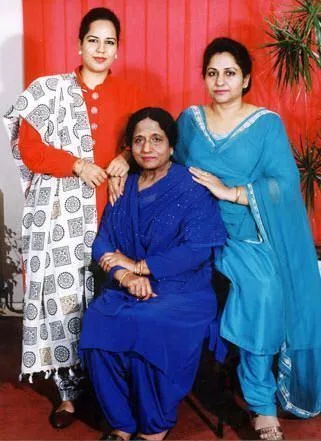
As mentioned above, she sang over 2,000 Punjabi songs but some of the best and most eternal songs are mentioned below:
Aa Ja Bhabhiye Dekhiye
AA Waas Manrhe Kol
Aaj di Diharhi Rakh Doli Ni Maa
Aana Hai to AA Jao
Aayi Shagnan di Raat
Addi Rat Tak Main Parhdi
Ae Munda Nira Sanichri
Aj di Diharhi Rakh Doli Ni Maa
Ajab Tamashe Kare Jawani
Akhian Chu Tu Vasda
Ambuva Ke Ped Suhane Kya Kahen
Ankhiyan Milake
Arhio Kag Banere Te Boleya
Azab Tamashe Kare
Baagan Wich Beliyan
Badnaam Na Ho Jaye
Baghan Wich Bolian
Bajare Dasitta
Ban Morni Bagan de Wich
Bari Barsi
Barin Barrin Bolian
Betti Chanan De Olle
Bhabho Kehndi Hai
Bhande Kali Kara Lao
Bittu Mangia Giya
Bolian Te Mahia
Bolian-Bagan Wich
Botal Varga Gall Ve
Bulian Te Cheer
Buri Hoi Lagdi Dharing
Chak Lavo Kaharo Doli
Chan Kithe Guzari Aai Raat
Chanda Re Main Teri Gawahi
Channa Tedi Pagh Walia
Char Geya Mahina Saun
Chare Di Maa
Charh Giya Mahina Saun
Charh Peeng de Holare Naal
Charhde Mirze Khan
Charkhe Ne Soot Layian
Chum Chum Rakho Ni
Dab Wich Adya Kharke
Dachi Walia Morh Muhar Ve
Dard Vichhore Da Haal
Deor de Vyah Vich
Dil Aashiwan Da Shishe Wango
Dil Ke Malik Sun
Dil Leke Bhaga
Dilhion Surmedani
Do Char Din Pyar
Do Pal Beh Ja Kol Ve
Duniya Se Nyari Gori Teri Sasural
Eh Jag Meet Na Dekheo Koee Sorath
Ek Meri Akh Kashni
Ek Wari Aa Ja Haniya
Galian Te Hoyian
Gaman Di Raat Lammi
Ghamaan di Raat Lammi
Chadhi Jawani Rahe Na Gujje
Eddar Kanka Uddar Kanka
Ena Nankiyan de Mooh Chaure
Gol Mashkari Kar Giya
Gora Mukhra Sandoohri Amb
Hae Na Was Ue Aje Na Was Ve
Hae Oh Mere Dhadia Rabba
Hari Main Keh Ke Hari
Harian Ni Malan
Hasse Nal Si Chalavan Phool Marea
Hathin Boota La Ke
Hik Te Lat Ke Rahina
Ik Meri Akh Kashni
Itne Door Ae Huzoor
Jadon di Ho Gai Sadhi
Jattifashiona Ne Patti
Je Jawani Da Maja Janda Reha
Je Mundiya Teri Akh Ve Dukhdi
Jhank Jharokon Se Tu Mehlonwale
Jugni Surinder Kaur
Jutti Kasuri Peari Na Puri
Kabhi Chandni Raaton Mein
Kabhi Panghat Pe Aaja
Kade Khole Whishki
Kag Banere Te Boliyan
Kala Dooria
Kamal Shounk Mahi Da Mainu
Katwa Ke Naiya
Khat Ayea Sohne Sajna Da
Kide Sohne Chan Ni
Kithe Mata Toriyae
Kothe Te AA Mahiya
Kothe Te Ud Kawan
Kut Kut Bajra Main
Ladja Bhrind Ban Ke
Lak Hile Majajan Jandi Da
Langh Aja Pattan Jhana Da
Larh Ja Bhrind Ban Ke
Lari de Ander
Lathe di Chadar
Laye Khabar Na Kujh
Leh Munda Nira Sanichri Aee
Loki Poojan Rub
Luti Heer Ve Gaman
Maar Gayo Re
Machchar Ne Khali Torke
Machiware Wich Baitha
Mahiya Punjabi Lok Geet
Main Apne Dil Ke Haathon
Main College Wich Parhdi
Main Mubarakbaad Dene Aai Hoon
Main Tenu Yaad Awanga
Main Vailan Ho Jaongi
Main Vee Jat Ludhiane Da
Mainu Deor de Vyah Wich Nach Len De
Mainu Heere Heere Akhde
Majhdhar Mein Kashti
Man Ja Balma
Masea De Mele Nu Jana
Mati Khudi Karendi Yaar
Mawan Te Theeyan Ral
Mein Jana Rad De Kol
Menu Heere Heere Aakhe
Mera Long Gawacha
Mere Sada Pardesiya Dhola
Meri Gharhi Te Baran Waze
Milni-Sadde Naven Sajan Ghar Aaye Saloni de …
Mitran Chalia Truck
Modenga Kad Moharan
More Raja Ho
Morenga Kad Muharan
Motor Mitran Di
Muklave Wali Raat
Na Jhirhkin Mutiare
Na Main Hindu Na Main Muslim
Nabhe Wale Theke Diye Band Botle
Najariya Mein Aayi
Ni Main Jana Rab De Kol
Ni Main Kyon Kar Jawan Kabe
Ni Wazdi Dhad Sarangi
Nikki Nikki
O Gori O Chhori
Oh Bada Be Lehaj
Oh Bhara Be Lehaj Ki Kariye
Panje Deor Kuare Bhabhi
Pat Giya Chubare Wali Nu
Pattu Ne Lohrha Mareya
Peke Jaan Waliye
Perin Navin Jhanjhran
Phir Tun Tun Toomba
Pind di Kamayee
Rasia Nimbu Leya De
Ratan Kalian
Ratan Kalian Kalli Nu Daar
Reh Gaye Bha Puchde
Rulenga Syal Wich Kalla
Rut Rangili Hai Suhani Raat Hai
Sada Chirhian Da Chambha
Sadde Ta Vehrhe Mudh Makai
Sade Tan Vehre Mud Makayee Da
Sajre Shareek Ban Gaye
Sapni de Vang
Sarke Sarke Jangdiye Mutiare
Sehtie Ni Sehtie Commentary
Sheesha Lele Behndi
Sherewalia Vanrhaviahawan
Sithniyan Guru Nanak Dev Ji
Suche Ni Mai Vaar
Suhe Ve Cheere Waliya
Sui Ve Sui
Sulan Te Son Gaya
Tande Chupna Chari de Hania
Tar Bina Tumba Vajda
Tere Singha Ne
Tere Utte Rakh Lai Agg
Teri Khatti Lassi Balie
Teri Maa de Nau Kurhian
Thekedaram Na Rakh Leya
Tille Walia
Tu Kahda Lambardar Ve
Tu Mera Bakan Lal
Tun Kahda Lambrdar
Vajida Kaun Saain Noon Aakhe
Vasta E Mera
Ve Gal Sun Deora
Ve Lai de Mainun
Vehrhe Sajna De
Wasta E Mera
Watan Ki Raah Mein
Yaar Lukauna Pejuga
